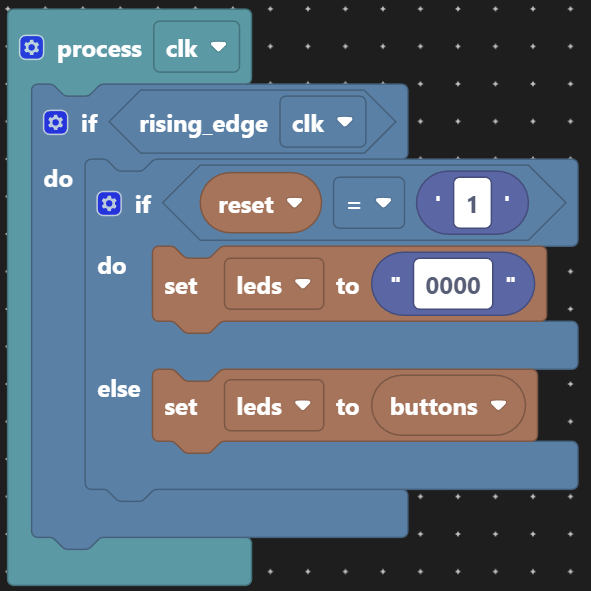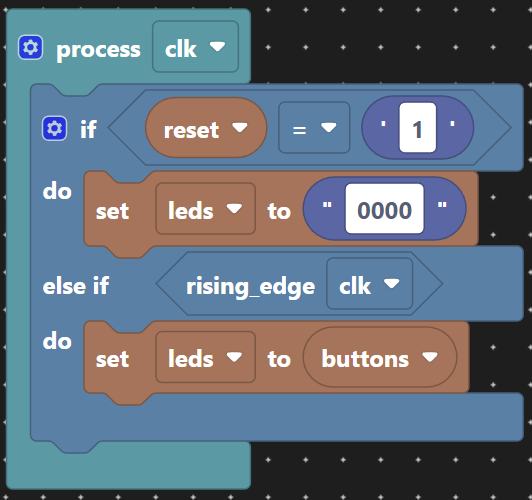Scratch VHDL
The purpose of "Scratch VHDL" is to make reprogrammable logic design into child's play. Sounds ambitious.
Buttons Driven LEDs
Very much the “Hello World!” application to make sure the end-to-end design flow works from code entry to testing the design on a development board.
Each toggle button lights a corresponding LED. That’s it. This design introduces the Scratch VHDL method of design entry using an assignment in a clocked process. This means that each button is registered before driving an LED. This works with both push and toggle buttons in the controller.
An extension is to maintain the last selected push button after it is released. This amendment is more suitable to the push buttons as it means it is no longer possible to turn off all the LEDs with toggle buttons.

Above, the wave traces for the LEDs mirror those of the buttons.
Implementation
You could just:

architecture scratch of logic_gates is
begin
leds <= buttons;
end architecture;
Except that’s just a ‘wire’ and not terribly exciting. Instead you could register (some might say “latch”, but that has bad connotations of “transparent latch” and a conversation for another day) the inputs before driving the outputs. That would allow us to introduce a simple bit of logic design.

On the rising edge of the clock (clk) transfer the state of the buttons to the leds. This does little presently except introduce a one clock cycle delay.
architecture scratch of logic_gates is
begin
process(clk)
begin
if rising_edge(clk) then
leds <= buttons;
end if;
end process;
end architecture;
Reset
Finally, we ought to provide the means of returning to a known state on reset. This requires the insertion of a test for a reset condition.
Synchronous Reset

On the rising edge of the clock (clk), check if reset is high, if so assign the default values, otherwise transfer the state of the buttons to the leds. Again, this does little presently except introduce a one clock cycle delay.
architecture scratch of logic_gates is
begin
process(clk)
begin
if rising_edge(clk) then
if reset = '1' then
leds <= "0000";
else
leds <= buttons;
end if;
end if;
end process;
end architecture;
The reset condition ensures we are able to start from a known state across our design. Here we use a synchronous reset, one that requires the active edge of the clock to execute. This is because synchronous resets are advised by the FPGA vendors for their devices.

Asynchronous Reset
It is possible to infer an asynchronous reset too, typically advised by ASIC manufacturers, but they can be inferred for FPGA technologies too. The advantages and disadvantages of each are not covered here. Just stick with the above synchronous reset for now.

The difference here from the synchronous reset example is subtle, the FDRE primitives have been swapped for FDCE primitives. The reset pin R has changed to CLR.
